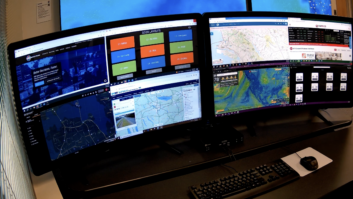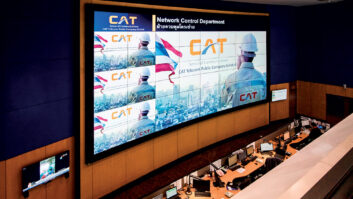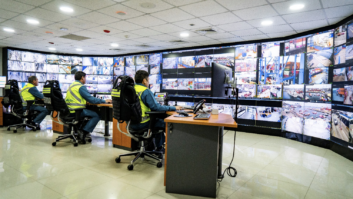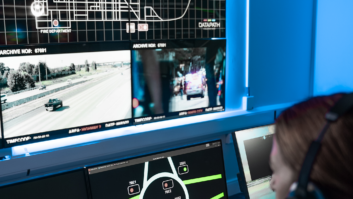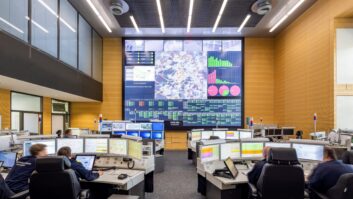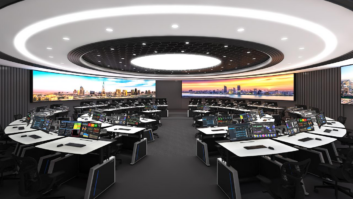Part one of this feature appeared in our control takeover section last week. Click here to read. For part 2, read on…
Having initially focused on the development of video wall control solutions, VuWall now offers a complete ecosystem of products for multi-video wall control and AV over IP distribution, including the TRx centralised control software.
“From a central TRx server, our customers can manage the content on multiple video walls and easily route any signal from one location to another with easy drag-and-drop operations,” says Plaetse. “This year, we have added IP KVM functionality to our software, allowing operators to control remote sources from their workstations, and even interact, share and control those sources on the main video wall or with other operators via their keyboard and mouse. For the remainder of 2023, we will continue to develop solutions that simplify the user experience with even more advanced touch panel control. The objective is to increase operator efficiency and improve response times.”
SECURITY THREATS
Several of the recent technology trends – especially those supporting remote control and connectivity – undoubtedly make remote working more straightforward. But with security often being an overriding priority, opinion is somewhat divided as to how much remote working is now ongoing in control room environments.
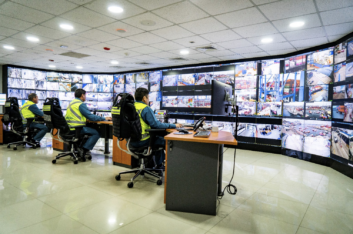 “The Covid-19 pandemic has accelerated the adoption of virtual room solutions,” says Vida. “With the need for remote operations and collaboration, companies have sought innovative approaches to maintain room functionalities while ensuring the safety and well-being of their personnel. This shift towards remote room setups has altered the market dynamics and opened up new avenues for companies to provide flexible and scalable solutions.”
“The Covid-19 pandemic has accelerated the adoption of virtual room solutions,” says Vida. “With the need for remote operations and collaboration, companies have sought innovative approaches to maintain room functionalities while ensuring the safety and well-being of their personnel. This shift towards remote room setups has altered the market dynamics and opened up new avenues for companies to provide flexible and scalable solutions.”
Schatz: “Remote production and work from home solutions are still top of mind. Many customers that resisted remote workflows have now embraced them, but the current preference is still in person, [although] our customers want to make sure they have the option to do remote production as well. I foresee this trend continuing throughout the next few years.”
Toine C. Leerentveld, director product management, cloud & controls at Crestron, comments: “The real changes have to do with virtualising the traditional command and control (C&C) centre, enabling easy access, collaboration, and sharing of relevant data and ensuring real-time communication. Control centres are smaller, and often they are replicated in various spaces around the world. We see traditional meeting rooms increasingly being used as ad-hoc C&C centres.”
Plaetse echoes the sentiments about the rise in remote working, but indicates that on-site operations have returned as pandemic conditions have receded: “Recent challenges have taught everyone, including control room operators, to work remotely. This accelerated a process that was slowly evolving already with technology that allowed teams to collaborate from multiple locations. Although control rooms have been resistant to remote operations for security reasons, organisations have developed methods and technology to secure the process. However, most control rooms reverted to onsite operations in 2023, with the technology in place to go remote if necessary.”
CONTROL RETURN
In a worsening cybersecurity environment – not least with companies in sectors such as broadcast/media and energy being specifically targeted – it’s perhaps not surprising that many organisations are specifying an en masse return to the control room. Nonetheless, there is a demand for vendor solutions to be protecting against multiple cyber threats, including via compliance with specific technical standards.
Leerentveld comments: “Of utmost importance for the control room market is complying with IT Security standards (NIAP/JITC), something Crestron puts at the forefront of our technology. [For instance] the move to software-based control systems with redundancy and fault-tolerance — which are 100% controlled by an organisation’s IT department — makes systems easier to scale, and hardens the solutions to reduce the attack vectors on our systems.”
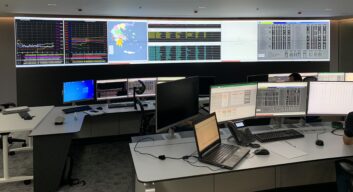 Brandon Rhoda, applications manager – vertical markets & solutions, adds:: “When it comes to security we have had active efforts for some time now to ensure our clients are purchasing products that are secure. One of the ways we are leading the effort is through an initiative called Catena. Catena is an open, multi-vendor standard, led by Ross, to ensure a common standard for control and configuration both on-premise and in the cloud. The need to secure environments and the connections between products and services is a number one priority in the Catena initiative.”
Brandon Rhoda, applications manager – vertical markets & solutions, adds:: “When it comes to security we have had active efforts for some time now to ensure our clients are purchasing products that are secure. One of the ways we are leading the effort is through an initiative called Catena. Catena is an open, multi-vendor standard, led by Ross, to ensure a common standard for control and configuration both on-premise and in the cloud. The need to secure environments and the connections between products and services is a number one priority in the Catena initiative.”
Meanwhile, in the ultimate example of cyber threats being prioritised, Plaetse confirms that they are also leading to the development of new control rooms in their own right: “Today, we are seeing an increased demand in cybersecurity operation centres. Again, the affordability of display technology has resulted in many new applications where investing in a video wall is justified by a quick ROI thanks to gain in productivity.”
GROWTH AREAS
In terms of other growth applications for control room solutions, our interviewees cited an extensive range – running the gamut from traffic management to defence & security.
“Control rooms play a critical role in defence operations across sectors such as government, transportation, critical infrastructure, and commercial facilities,” says Vida. “Specialising in secure video monitoring, control and military systems offering zero-latency have witnessed significant success for us. With the increasing emphasis on safety and threat prevention, this sector has seen continuous growth and demand.”
It is also bleakly indicative of current times – in which extremist attacks on schools and houses of worship, to name just two examples, have become tragically frequent – that there has also been a drive to build more public safety-oriented control rooms. Courtney Mamuscia is marketing director of RGB Spectrum: “There has been a big emphasis in the world at large on control and monitoring centres. The ability to put up different schematics and see what is happening on a site, and around, it has become very important. For example, in the case of a [security threat at a school] our Zio mobile app could be sent to the police officers entering the site so they could have a clear idea of the layout.”
FUTURE TRENDS
Several contributors also alluded to several specific technology developments in terms of their future potential (or not) for control rooms. UHD and HDR are both very big trends in broadcast, but it seems their adoption path could be more protracted in control rooms.
“UHD is a trend, but most of the installations for our customers are in HD with a standard resolution of 1080 pixel,” notes Bauer. “An exception are KVM solutions in air traffic management, where higher resolution is needed for radar surveillance. HDR is so far only a topic for our broadcast customers.”
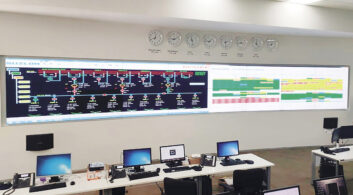 The likelihood of AI and machine learning having a big impact, on the other hand, seems rather more assured. “Looking ahead to the rest of 2023, several trends and launches can be anticipated in the market,” says Vida. “One being the most controversial and popular: AI and machine learning integration. It is on our agenda to focus on leveraging artificial intelligence techniques to enhance control room operations. Others are cloud-based room solutions, enhanced cybersecurity measures, and virtual and augmented reality applications.”
The likelihood of AI and machine learning having a big impact, on the other hand, seems rather more assured. “Looking ahead to the rest of 2023, several trends and launches can be anticipated in the market,” says Vida. “One being the most controversial and popular: AI and machine learning integration. It is on our agenda to focus on leveraging artificial intelligence techniques to enhance control room operations. Others are cloud-based room solutions, enhanced cybersecurity measures, and virtual and augmented reality applications.”
So the long-standing impression that control rooms remains a proving – and critically important first market – for new technologies is firmly underlined by speaking to some of the leading vendors in the space. Impressively resilient to the challenges of the last few years, control rooms will continue to be some of the most fervent ‘early adopters’ of the latest AV solutions.
